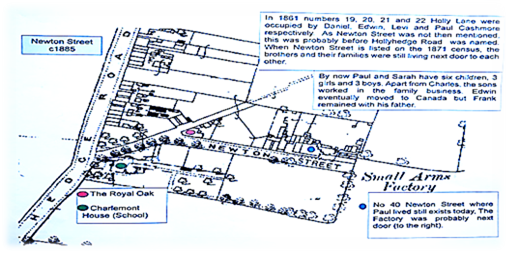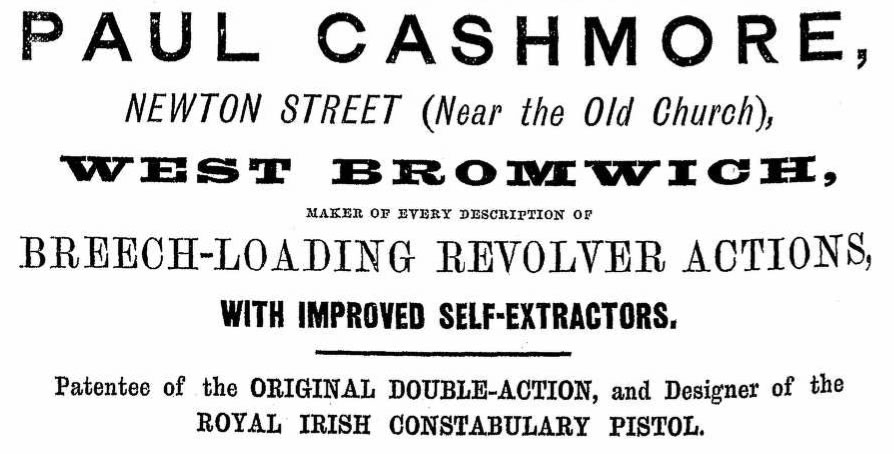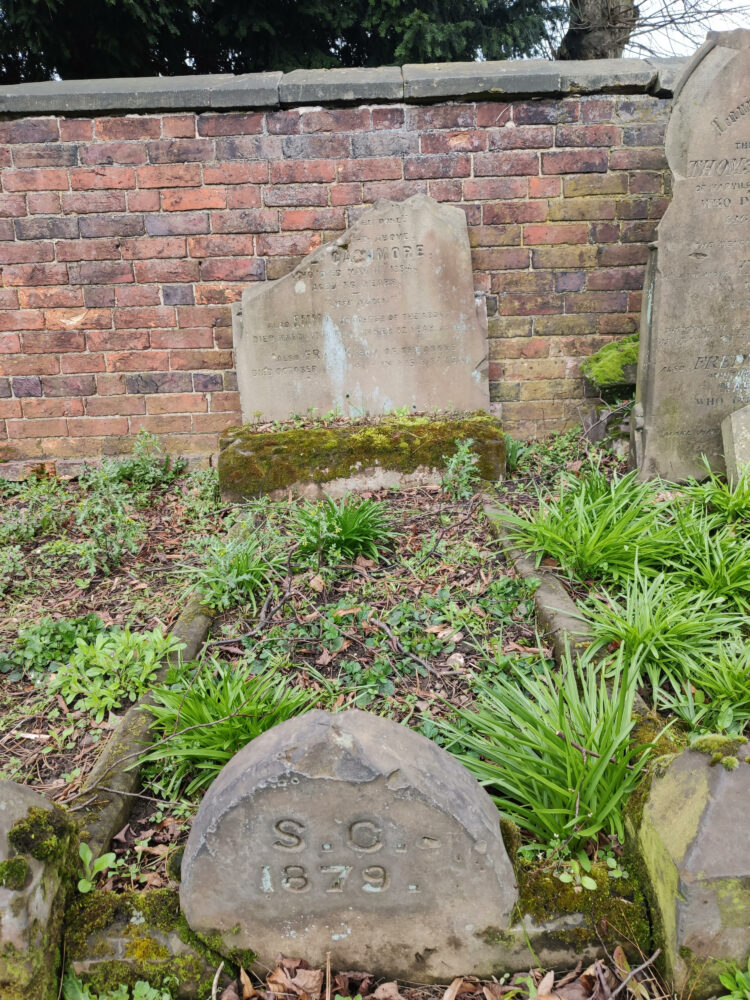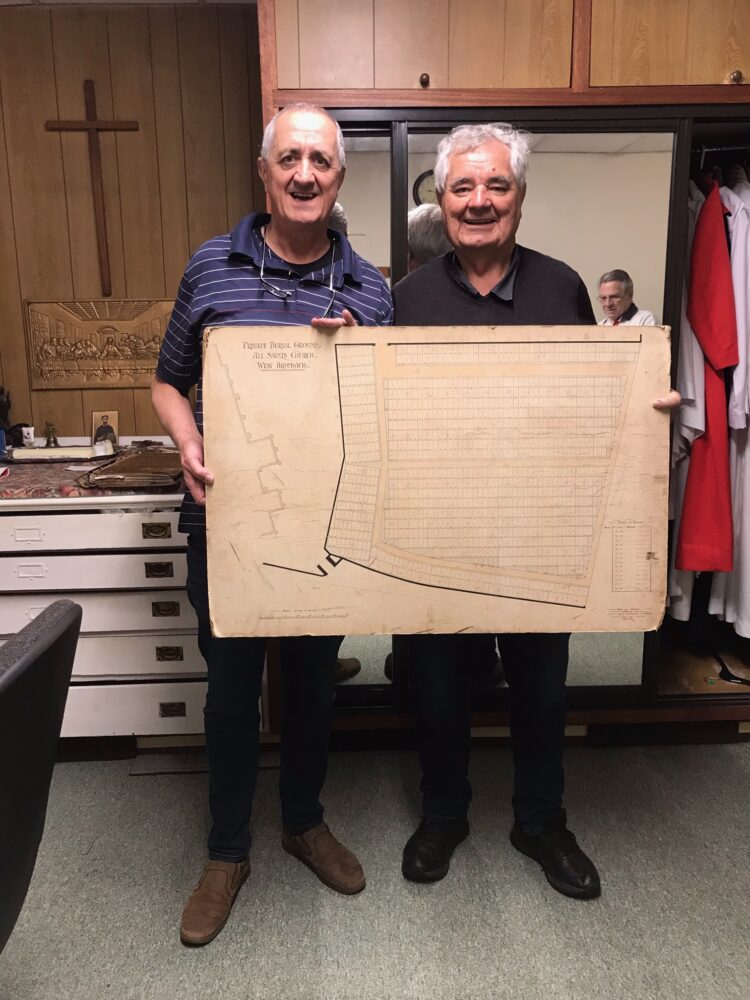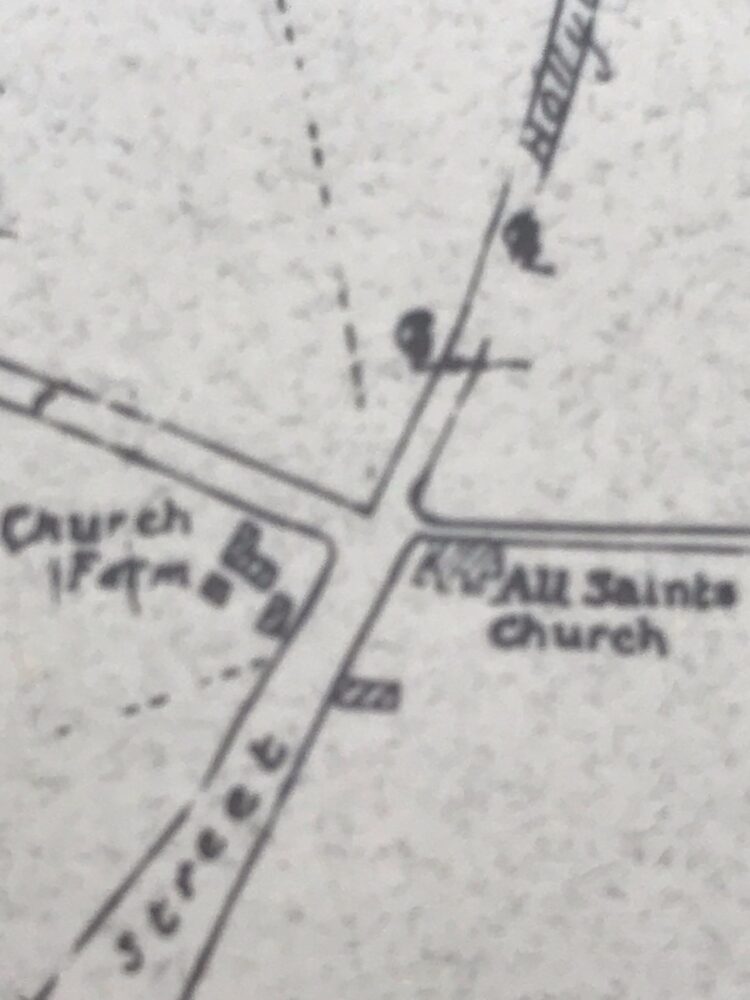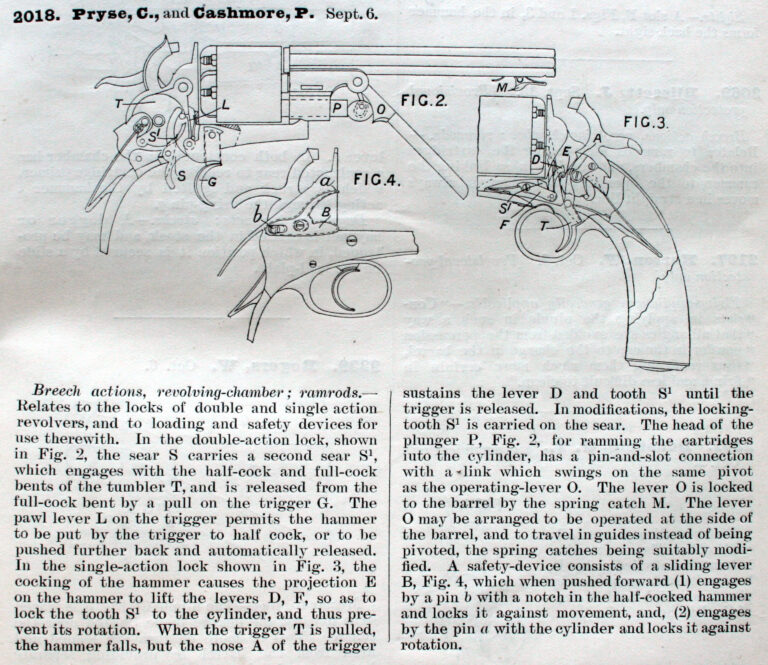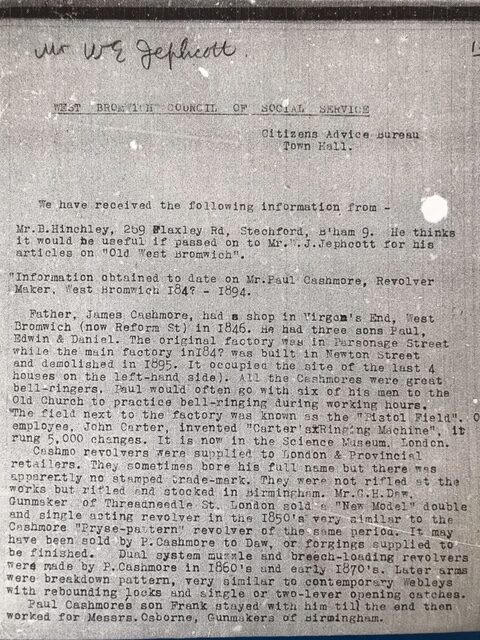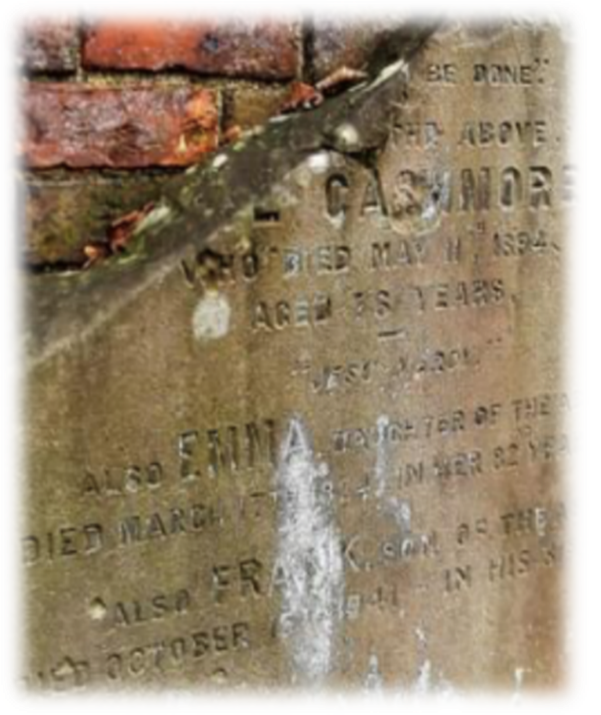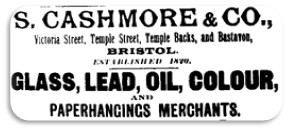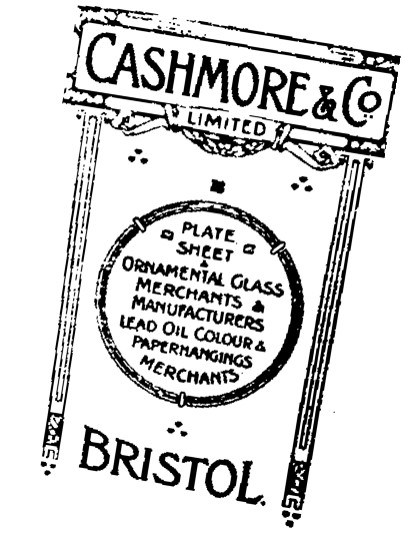Paul Cashmore established himself as a gunmaker in Churchfield, West Bromwich in 1849 and moved to the Newton Street Works, Old Church, in 1854”
Some West Bromwich names can be traced back here for centuries. Cashmore is one such name.
Thomas Cashmore 1590-1659 married Jane Westwood in West Bromwich in 1613. Their grandson Paul (Paule) 1664-1741, is named on a 1718 document as a freeholder of West Bromwich alongside the Turtons and the Lowes. The population of West Bromwich would have been quite small at that time.
Following their line through James (1) 1697-1770, Daniel 1735-1808 and James (2) 1768-1838) leads to the West Bromwich Cashmore pistol makers.
James (2) Cashmore 1768-1838 and wife Elizabeth lived in Virgins End. James was a saddle pistol filer, an occupation with pistols that would be taken up by his sons James (3), Edward, Jesse and Joel. They all lived in close proximity; Walsall Street, Reform Street, Sandwell Road and Temple Street.
Son James (3) 1790-1859 lived at Church Farm opposite All Saints Church where he was Beadle.  When Christ Church was built in 1829, he was also Beadle there for a time.
When Christ Church was built in 1829, he was also Beadle there for a time.
Mary Willett gives us a good description of Beadle James Cashmore, “his livery was a blue coat with brass buttons and red facings, blue waistcoat and knee breeches, with shoes and silver buckles. He was no insignificant officer of the church. In his hand he carried a long stick, which was frequently to be heard arousing some unfortunate sleeping member of the congregation On one occasion just before the service began, a girl sitting among the other Sunday School children dropped her bonnet over the front of the gallery. The beadle perceiving this at once repaired to the spot where the bonnet lay, looked up at the owner, placed the end of his long staff in the article and hoisted it up to the little girl”.
Beadles generally played a multifarious role and still exist today but their duties are largely ceremonial.
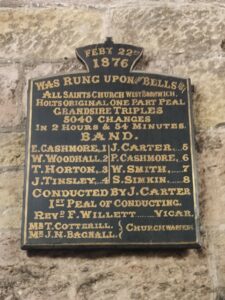
His name is inscribed on the first of the eight church bells (1848?)
Thomas Mears, Founder, London.
All Saints, West Bromwich.
William Barton (Clerk)
James Cashmore (Beadle)
A number of this family of Cashmores were bell-ringers and a plaque installed in the bell tower of All Saints on Feb 22nd 1876 lists E. Cashmore on no.1 and P. Cashmore on number 6.
Also named on the plaque is John Carter, a worker at the Newton Street factory, who went on to design and construct The Carter Ringing Machine.
It was Paul (1818-1894) the son of James (3) who built the Small Arms Factory in Newton Street (demolished 1895). Here uncles, brothers and sons lived side by side and were all engaged in the family business.
In 1891 Paul occupied no 40 Newton Street so it is probable that the factory occupied the site next door where the four Victorian houses now stand, numbers 42 – 48. The field next to the factory was said to be known as “Pistol Field”.
Paul was known to have donated guns as competition prizes at the Staffordshire Rifle Volunteers events held in Dartmouth Park. He designed and patented pistols and supplied to London and provincial retailers but they did not always bear his full name.
“In 1855 Birmingham gunmakers Charles Pryce and West Bromwich gunmaker Paul Cashmore received a British Patent 2018/1855 for a self-cocking revolver mechanism and various improvements to revolver designs as well as improvements to loading levers for revolvers. The patent would become the basis for what collectors refer to as the Daw revolver, a gun that is typically attributed to George H. Daw of London but was never actually manufactured by him.
It is believed that about 5,500 of the Pryce & Cashmore patented percussion revolvers were produced c 1855 to 1865 with the large majority of them being retailer marked by George Daw”. (see – collegehillarsenal.com)
Edward Cashmore 1793-1852 another son of James (3) was a master pistol maker/employer established in Sandwell Road. He died aged only 58 years but most of his sons carried on with the family occupation.
Such as Edward b1826 who was listed as a pistol maker in Spon Lane on the 1851 census, although 1861/1871 shows him as an Iron Merchant in Lombard Street.
Son Timothy Clark 1828-1893 was also a pistol maker in West Bromwich then Aston.
Son Samuel 1830-1889 did not follow the family occupation, instead at 21 he was a clerk at a glass works, (probably Chances). By 31 he had relocated to Bristol and was a successful Glass Merchant employing 18 men and 10 boys. Samuel’s daughter Hilda also made her mark. She was one of that remarkable generation of social activists born in the later 19th century. She played a leading role in the foundation of the Bristol University Settlement at Barton Hill.
Eldest son George 1818-1884 did carry on in the gun making trade, also in Sandwell Road. He married twice. Firstly, to Ann Adams, and their two sons George and Samuel were gunmakers in Aston.
Secondly to Elizabeth Brookes with whom he had 5 children. They lived at 353 High Street where she had a milliners/haberdashery shop. George died there in 1884 of Bronchitis, a condition his father had also suffered with. Following advice that she should move to a better climate, Elizabeth moved to Australia with her daughters and sons Arthur and Herbert.
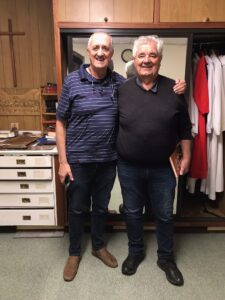
On Friday 5th May, 2023 two of her great grandsons visited West Bromwich during their first trip to the UK. We were able to meet up with them at All Saints Church to view the plaques in the bell tower, some of the records held in the vestry and visit the graveyard where many Cashmores were buried. This was followed by a stroll down Hollyhedge Road to Newton Street where the Small Arms Factory was located and where so many Cashmores lived from the 1850s to 1894 when Paul died.
By 1901 there were no Cashmores residing in Newton Street. Paul’s son Edwin had moved to Canada, son Frank and daughter Emma had moved to Birmingham.
